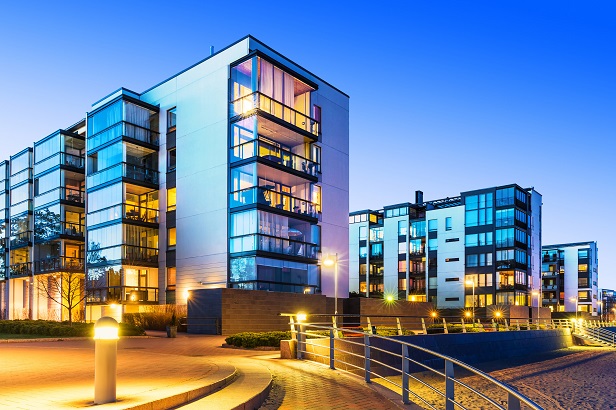➤➤ Join the GlobeSt.APARTMENTS (formerly RealShare) conference October 29-30 in Los Angeles. The event will analyze the opportunity in the emerging trends and conditions of the multifamily market. Don’t miss out on joining the 1000+ of the industry’s top owners, investors, developers, brokers and financiers as they gather for THE MULTIFAMILY EVENT OF THE YEAR! Click here to register and view the agenda.
IRVINE, CA—The multifamily sector showed the most robust growth amongst all CRE sectors—multifamily, office, industrial, retail and hotel—in the first quarter of 2019, according to Ten-X Commercial’s Multifamily Market Outlook.
The first quarter of 2019 marked the first time in five years there was a decline in the number of new rental properties coming to market, according to the report. This decrease helped the multifamily market vacancy rate hold steady in the upper-4% range, the level it’s been since Q3 2018. Yet these figures are relative as the actual number of vacant apartment units remains at its highest since mid-2012, Ten-X reported. As the number of new apartments begins to decline, those on the market will be rented faster.
Construction is expected to scale down next year, causing vacancies to rise to a predicted 5.7% before quickly being absorbed due to the continuing increase of household formations, Ten-X Chief Economist Peter Muoio said in prepared remarks.
Q1 2019 also saw a strong year-over-year increase in rent prices in excess of 4%, a slight drop-off from their 2018 pace, but ahead of price increases seen throughout 2018. Over time, rent prices will continue to improve, with effective rents predicted to reach $1,476 per unit by 2022.
Demand Drivers
There are several drivers behind multifamily, few if any of which showing signs of abating. A plateauing homeownership rate, which has remained at 64.3%, low unemployment and millennial attitudes towards homeownership and renting are among these demand drivers. Then there are the Millennials, a group that continues to gravitate towards apartments even as they get older.
“Millennials are a large reason why the current rental market is thriving,” Muoio said. “Though we expect homeownership in this important age group to increase over the long term, so far they remain focused on renting.”
Declining Deal Volume, Valuations
The first quarter of 2019 also saw a decrease in deal volume of multifamily properties. According to RCA data, deal volume fell to just under $36.5 billion—a decline of 30.5% from Q4 2018 and a 1.4% year-over-year increase. Apartment pricing also shows a quarterly decline against a year-over-year increase. After reaching an all-time high in Q4 2018, apartment pricing in Q1 2019 slowed by 3.4%, despite being up 10.2% year-over-year.
The July Ten-X Commercial Apartment Nowcast, which gauges real-time property pricing dynamics using live bidding and market activity data on the Ten-X Commercial platform, shows a more stagnant market, with rental prices up just 2.1% year-over-year.
“Pricing growth in the overall multifamily market has flat lined,” said Muoio. “While rents have increased since 2018, growth has recently slowed.”
The Ten-X July Nowcast also found that the multifamily sector is the only CRE sector showing annual pricing growth over 1%, measuring a 1.9% increase as of July.
The Ten-X Commercial Multifamily Valuation Index, which also includes data from beyond Q1 2019, shows a decline of more than 14% in valuations in 2019. This decline is expected to go into 2020, before a predicted 2021 recovery.
© 2025 ALM Global, LLC, All Rights Reserved. Request academic re-use from www.copyright.com. All other uses, submit a request to [email protected]. For more information visit Asset & Logo Licensing.









